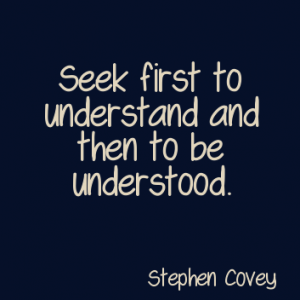What is critical thinking? When we hear the phrase ‘critical thinking’ we tend to assume…

Longstanding workplace conflict – your tool kit
Long-standing workplace conflict can have a profound impact on the people directly involved so let’s take a look at why it happens and how it could be addressed.
It is easy to assume that long-standing conflict is generated by irreconcilable differences but often this simply isn’t the case. During any conversation, each person will take away their own perspective of what was said during the exchange and I am often amazed at how two people can walk away with such different accounts of the same conversation.
The reason for this is not actually our different viewpoints but rather, the stories we attribute to the exchange. Simply put, we make stuff up…
“he doesn’t value me”
“she’s questioning my authority”
“he’s so arrogant”
“I didn’t like her tone” etc.
These are our stories… the stuff that we make up. Once we have generated these stories, our brain needs to justify our position so we look for evidence to reinforce the story. In doing so our brain validates our actions and behaviour and confirms that we are completely justified in our response.
Thankfully, It’s not just you, in fact, we all do it and on most occasions, we are not even aware of it. Here are a few suggestions that may help you identify where you have created a narrative that may not be completely accurate.
Reflect on the conversation from a detached perspective
What was actually said? Did I understand his/her meaning correctly? Was I being defensive or did I listen carefully to the other point of view? Did my response cause the other person to react adversely? Do we want similar outcomes? Is there common ground to start from?
Ask for a meeting
This is not to go over old ground but an opportunity to tell the other person how you feel in a calm and non-accusing manner. You will need to be focused not to fall back into your old narrative. If you can manage it, be honest, be open, and be willing to hear something different.
It’s Important that this meeting should be held in a calm environment where you’re not interrupted and both people have the mental space to be fully present in the conversation, without distraction. This is the opportunity to ask for clarification. Use statements like “what I think you said is”. To address feelings use statements such as “when you said X it made me feel Y” Often you will be amazed at what the other person thought that you said or what they felt you were suggesting.
By listening to each other in a way that is open to exploring the stories that you both may have contributed to the conversation you hold the potential to resolve the issue and derive a plan to move forward. At the very least you have made an attempt to understand each other’s perspective more clearly.
Engage a neutral third party
Sometimes when you have been going around and around for a long time it may be useful to ask a respected third party to engage. This allows both parties to confront their narratives by explaining their beliefs and actions to the third person. Providing the space for a different perspective to be considered will create an opportunity for a new co-created story to begin.
Tired of being tired
Sometimes after long periods of workplace conflict, people reach a point where they are worn down and simply tired of being tired. Even though you feel justified in your beliefs and behavior, maybe it is time to just give it up so that you can create a different experience. Take some time to think about what it could feel like to be free of the feelings associated with long-standing conflict.
What is the price that you are paying to keep the conflict going?
What would it take to come to a resolution – even if that resolution is to respect each others differences?
You may never be best friends and that’s ok but surely it’s in your best interest to have the best relationship with this person that you are able to have. I’m not suggesting compromising on your values or your boundaries but rather, find a way to be in a relationship without destructive conflicting behaviour, lessening workplace conflict where you can.
Are you willing to make an honest gesture towards creating a new story between you and this other person in conflict? If so, I invite you to try some of the steps above so that you can unwind the story of resentment and anger or whatever emotion fuels your current behaviour – whereby enabling you to cooperatively construct a new way of interacting…and a new story or narrative together.



